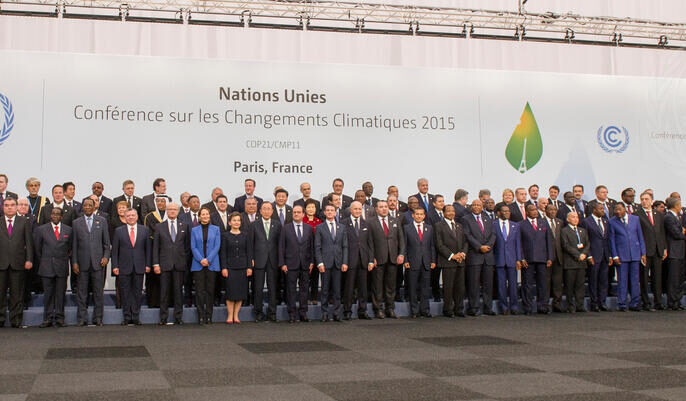Where Did the World Fly Most Frequently in 2024?

Skift Take
Global air travel continued to soar in 2024, with many international and domestic routes experiencing remarkable year-on-year growth. New data from aviation analytics firm OAG reveals key trends and insights, with a few surprises in the mix.
Examining the number of seats offered between global airports, seven out of 10 of the world’s busiest routes for 2024 were in the Asia-Pacific region. However other parts of the world also posted impressive growth.
Taking a closer look at the international top three, Seoul Incheon to Tokyo Narita claimed third place with 5.4 million seats, falling short of the second spot by just 58,000 seats. Capacity between these two East Asian capitals jumped by 30% year-on-year and a 68% compared to 2019.
Solid demand among leisure travelers helped boost the numbers, however, it comes as Japan juggles overtourism concerns. Earlier this year, officials introduced a daily limit of 4,000 climbers at Mount Fuji. A fee of JPY 2,000 ($12) was also added by Yamanashi Prefecture to combat overcrowding and improve safety.
Many see the challenges at Japan’s most famous landmark as representative of broader problems at tourist hotspots. The country aims to receive 60 million inbound tourists by 2030, surpassing the pre-pandemic peak of 31.88 million visitors in 2019.
Surge in Cairo-Jeddah Traffic
Squeezing into the second spot is Cairo to Jeddah, which continued to perform strongly with 5.5 million seats. Annual capacity surged 14% versus 2023 and soared 68% above pre-pandemic levels. This highlights the huge demand for travel between these two hubs in a year marked by regional instability and war.
The battle for the world’s busiest international route saw a reshuffle in 2024, with Hong Kong to Taipei reclaiming the number one title.
The city pair, which ranked third in 2023, reached pole position with 6.8 million seats—a 48% increase from the previous year. While multiple factors are at play, the growth reflects Asia-Pacific’s accelerating post-pandemic recovery, driven by pent-up leisure demand and resumed business activity.
Despite this impressive rebound, current capacity on the route trails 2019 levels by around 15%, suggesting there is further room for network expansion.
What About New York?
New York to London is often considered to be one of the world’s busiest routes, but you’ll need to go to the very bottom of the top 10 chart to find it. In 2024, JFK to Heathrow was the 10th busiest international route, with 4 million seats available.
Despite trailing the top 10 ranking, it remains the busiest international route among all European and North American airports. Notably, the 4 million figure does not include flights to Newark or London Gatwick, which would lift the overall ‘city to city’ total.
For its part, Heathrow confirmed that last month was its busiest November ever, with 6.5 million passengers passing through its four terminals. It’s also bracing for a 21% year-on-year increase in passengers on Christmas Day itself.
Other interesting growth areas include Dubai to Riyadh, which had 4.3 million seats available in 2024, representing a 37% increase in capacity compared to 2019. This figure is likely to rise even higher in 2025, with expansion by low-cost carriers such as flyadeal and the launch of new full-service airline Riyadh Air.
Domestic Flights in Detail
While most attention is given to international routes, there are some interesting data points in the domestic figures too.
Globally, Jeju to Seoul Gimpo retained its title as the world’s busiest domestic pair, recording 14.2 million seats in 2024. Despite a 3% year-on-year increase, capacity remains 19% below 2019 levels, reflecting a gradual but incomplete recovery. Jeju is a hugely popular island off the southern coast of South Korea and is famous for its natural beauty, but also its tax-free shopping.
Sticking in the East Asia region, Japan’s top domestic route, Sapporo to Tokyo Haneda maintained a dominant position with 11.9 million seats and ranked second worldwide. This was closely followed by the Hanoi to Ho Chi Minh City in Vietnam, which recorded 10.6 million seats linking the country’s two largest cities.
Australia's Notable Addition
The only non-Asian domestic route to make the top 10 is Melbourne to Sydney in Australia. More than 9.2 million seats were offered in 2024, making it the fifth biggest intra-country pair.
The U.S. domestic market didn’t make the global top 10, but it was still robust. Atlanta to Orlando topped the American chart with 3.5 million seats, closely mirroring 2019 figures. Other notable entries include Honolulu to Kahului, which recorded a 17% increase versus pre-pandemic levels.
December 1 was the busiest day in TSA history as the agency processed more than 3 million travelers, capping off one of the busiest Thanksgiving travel periods on record.
It remains to be seen if this trend continues into 2025. Many U.S. airlines, including Frontier and Southwest, said they plan to trim networks and frequencies, citing overcapacity concerns.
Reflecting on the year’s numbers, John Grant, OAG Chief Analyst said: “With the [Asia-Pacific] region very close to a full recovery, the busiest routes are concentrated in the familiar major hubs of Hong Kong, Seoul Incheon, and Singapore, although the composition of the supply on those routes is changing as the low-cost sector continues its growth at a faster rate than legacy.”





